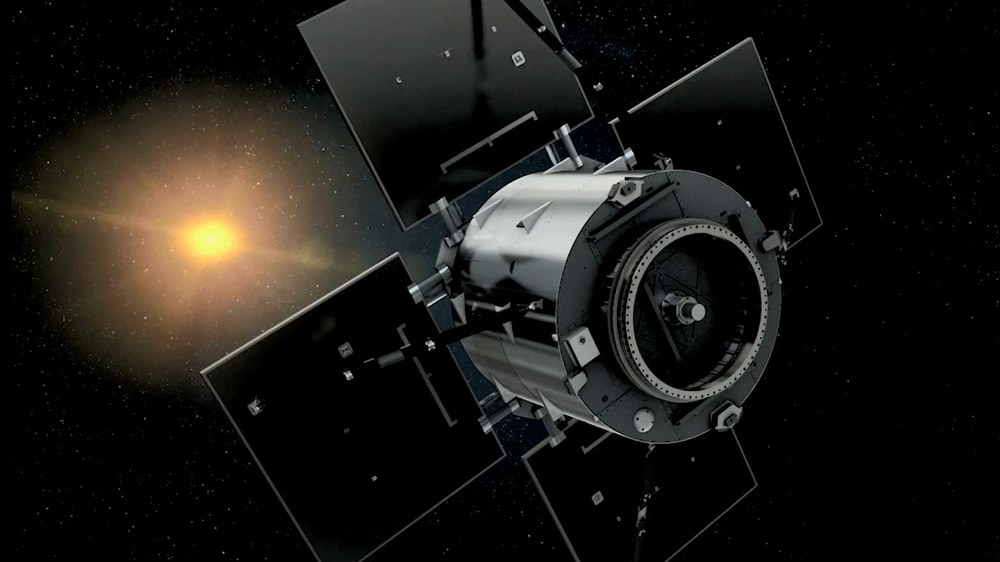The Eu:CROPIS mission

Astronauts have to be supplied with air, water and food while they are in space. Closed life support systems are used to recycle these vital resources and make them available for long-term use over periods of several years. The main focus of DLR's Eu:CROPIS mission will be to test the long-term stability of a biological life support system for missions to the Moon or Mars.
The mission name, Eu:CROPIS, stands for 'Euglena and Combined Regenerative Organic food Production in Space'. The mission is intended to demonstrate that urine can be converted into fertiliser for plants under lunar and Martian gravitational conditions. Eu:CROPIS is therefore an essential stepping stone to the carrying out of future long-duration missions or the construction of habitats on the moon or Mars, since the biological life support system will enable the recycling of waste and production of food. If fresh vegetables can thrive on converted biological waste products in space, this will be a great achievement in terms of life on Earth as well. Recycling of urine or liquid manure to provide valuable fertiliser and fresh water in a closed life support system would considerably improve not only conditions in urban conurbations, but also food supplies in extreme, arid regions and disaster zones. An additional bonus would be a reduction in the over-fertilisation of land and pollution of groundwater with manure and urine.
A closed life support system in space
The Eu:CROPIS satellite is home to two biological life support systems comprising greenhouses, biofilters (Combined Regenerative Organic food Production, (C.R.O.P.®), dwarf tomato seeds, green algae (Euglena gracilis) and synthetic urine. The biofilter consists of a 400-millilitre-capacity chamber filled with lava stones. In and on these porous stones are bacteria, which will convert the urine that is circulated over them into nitrate. However, before nitrate can be produced from urine, the urea in the urine decays into ammonia, which is toxic to plants. The bacteria in the biofilter can only break down the ammonia slowly. In order that the tomato plants are not harmed before this process is completed, Euglena is used to assist the bacteria in breaking down the ammonia, because this single-celled alga is able to metabolise ammonia. The algae are integrated into the C.R.O.P.® system via a membrane, with the aim of detoxifying the system if the introduction of the synthetic urine initially results in a potentially excessive level of ammonia. At the same time, Euglena also produces oxygen, which in turn is needed by the organisms in the biofilter.
The urea converted into nitrate in the trickle filter serves as fertiliser for the tomato plants; hence, the plants also act as biosensors. They indicate whether the urine has been successfully converted into a fertiliser solution. Cameras record everything and the data is sent to the DLR control centre in Oberpfaffenhofen (German Space Operations Center; GSOC) and the DLR Microgravity User Support Center (MUSC) in Cologne. GSOC controls the satellite and payload, while MUSC receives the data from the greenhouses. LED light is controlled by a timer to provide a regular diurnal rhythm and a pressure vessel provides an atmospheric pressure of one bar, corresponding to the pressure at Earth’s surface.
Experiments in two phases
During the mission, the satellite will rotate about its longitudinal axis, and the strength of the resulting artificial gravity will depend on the rate of rotation. In the first experimental phase, lasting approximately 23 weeks, gravitational conditions equivalent to those on the Moon will be created. In this phase, the first greenhouse will be in operation. In the second phase, the gravity will replicate that of Mars. This is when the experiments in the second life support system will be conducted. The mission will last 62 weeks. The satellite will remain in space for approximately a further 18 years, and will then burn up during re-entry into Earth's atmosphere.
DLR's compact satellite – CompSat
Eu:CROPIS is the first mission for DLR's compact satellite, CompSat, and more missions will follow. DLR is developing new satellite technologies and demonstrating the viability of effective, low-cost satellites. The aim of CompSat is to use standard components to flexibly adapt the satellite configuration to suit each specific payload for future missions. DLR is thus also acquiring adequate advisory expertise for future research platforms.
The DLR Institute of Space Systems took the lead role in constructing the satellite bus and the complete satellite. The DLR Institute of Composite Structures and Adaptive Systems in Braunschweig developed the structure and contributed the pressure vessel. The Eu:CROPIS satellite weighs 230 kilograms, stands 1.10 metres high and has a diameter of one metre. Its power is supplied by four solar panels, each with an area of one square metre.
The satellite was launched on 3 December 2018 aboard a SpaceX Falcon 9 from Vandenberg Air Force Base in California.
